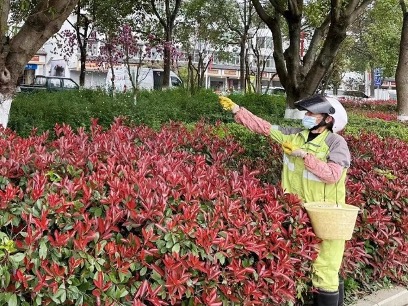The Group continuously pursues the reduction of natural resource consumption and emission, and energy conservation. We promote technological innovation, increase the use of clean energy, optimize the structure of resource use, and apply new technologies to intelligently manage construction projects, in order to provide new ideas for a sustainable environmental management.
Promoting the use of clean energy is an important task to improve energy structure, ensure energy security, and promote environmental protection. In response to national policies, the Group vigorously promotes the use of new energy vehicles, and has purchased a large number of new energy equipment such as electric tricycles and LNG vehicles. Moreover, according to the relevant preferential policies introduced by the project companies locally, the Group encourages them to use new energy vehicles in a bid to boost the comprehensive energy transformation and the green and sustainable development of the Group.
The Shenzhen Bao’an Urban Steward Project is the Group’s first large-scale initiative to deploy new energy vehicles, and embody green environmental principles. Utilizing technologies such as 5G, AI, the IoT, big data, and cloud computing, this project introduces autonomous sanitation vehicles for mechanized cleaning, achieving mechanical operations for 100% of main and secondary roads. The project explores combined operational models, promoting efficient operational transformation while helping realize the goal of “carbon peaking and carbon neutrality”.
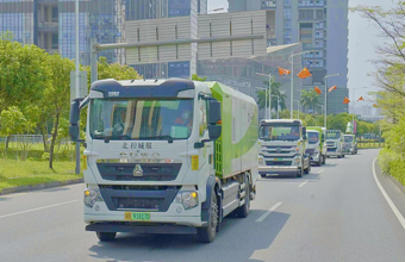
The Group has always been committed to promoting the development of the circular economy. Through technological innovation and management optimization, we actively explore various methods of energy saving and consumption reduction, continuously improve the energy utilization efficiency of the hazardous waste disposal projects, and inject new momentum into the sustainable development of the Group. In the Shandong Pingfu project, we reduced unnecessary energy consumption and improved overall energy utilization efficiency by taking measures such as installing frequency converters on adjustable equipment, optimizing operation methods, and reasonably configuring equipment. On the basis of these measures, we successfully converted the waste heat from the waste heat boilers into electrical energy and advanced the implementation of the steam power generation project. In July 2023, the waste heat steam power generation project successfully achieved grid connection for the first time, generating a total of 1.278 million kWh of electricity throughout the year, saving the Group over 900,000 yuan in external power costs. In the Weifang project, we actively promoted the photovoltaic power generation project. In the first half of 2023, the project was officially put into operation, generating approximately 300,000 kWh of electricity throughout the year and saving approximately 70,000 yuan in external power costs. The successful practices of the Shandong Pingfu and Weifang projects have created a brand-new model of energy saving and consumption reduction. They not only improve energy utilization efficiency and reduce energy consumption, but also inject new vitality into the development of the Group’s circular economy.

The treatment objects of the sewage station are wastewater after physical and chemical treatment, initial rainwater and domestic sewage. We implement the biochemical process of “hydrolysis acidification+ anaerobic + anoxic + aerobic + MBR” and advanced process of “sand filtration + carbon filtration+ ultrafiltration + reverse osmosis” to make the effluent meet the Reuse of Urban Recycling Water –Water Quality Standard for Urban Miscellaneous Water Consumption (GB/T 18920) (《城市污水再生利用城市雜用水水質(GB/T 18920)》). The final effluent is used for production, greening and road spraying, without discharging. For example, the condensate through three-effect evaporative in the physical and chemical workshop can be used for production water such as pharmaceutical preparation water and quench water. While realizing the reuse of water resources, we have achieved zero discharge of wastewater from the plant, reduced the consumption of fresh water, and implemented the requirements of clean production.
In 2023, we renovated the water pipeline of the alkali solution pipeline of the Group’s Weifang Project, adding a pipeline from the outlet of the water circulation pump for alkali washing to the ultra-cold water tank. This ensures that the water in alkali washing pool is used by the ultra-cold sprinkler, reducing the alkali and tap water consumption. In addition, the project innovatively renovated the pipelines of circulating water and system flushing water of the three-effect system, feeding condensate water from the triple-effect steam condensate pipeline to the water tank, and then sent to the regulating tank after cooling down, greatly reducing tap water consumption. The renovation has reduced the tap water consumption from 9,538 cubic meters in 2022 to 1,657 cubic meters.
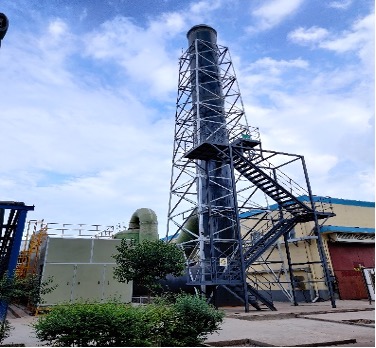
To promote resource conservation, the Group organizes projects to carry out technological transformations based on their own production conditions in order to reduce the consumption of various resources during the manufacturing process. By installing hose pumps and powder pumps at the kiln head, Yichang Branch solved the problem of material transportation and reduced production consumption. The Xuzhou Pingfu Branch installed a steam pipeline to the crusher to ensure the safety of general material crushing, and appropriately replaced the more expensive nitrogen crushing, effectively lowering the project operating costs. Shaanxi Branch altered the packaging method of TV screen glass, resulting in the use of fewer tons of packaging and the promotion of resource conservation.
In order to improve the efficiency of resource use and process disposal, the Group’s Yichang Project has carried out a process transformation plan, which includes installing fire-proof cover plates for the incineration area of the material pit, adding reclaimed water reuse pipelines for sewage disposal, changing the PVC pipes to carbon steel pipes to achieve incineration use to reduce the difficulty of fan inspection in the deodorization system, prolong the useful life of the quench tower spray gun, save the resource use of the process and greatly improve the disposal efficiency.
Shandong Pingfu hazardous waste treatment project was improved and upgraded in terms of technology and management system. In terms of technical improvement, the kiln head incineration of high-sulfur and high-chlorine materials and low calorific value wastewater was strengthened through effective pretreatment means to achieve continuous and stable feeding of incineration waste liquid. In addition, a storage and transportation sorting system was developed in the current year to ensure that materials were unloaded in time when entering the plant. Each barrel and each package must be inspected. The nature of the materials distributed to each disposal workshop was further clarified, greatly enhancing the safety of the disposal process for hazardous waste.
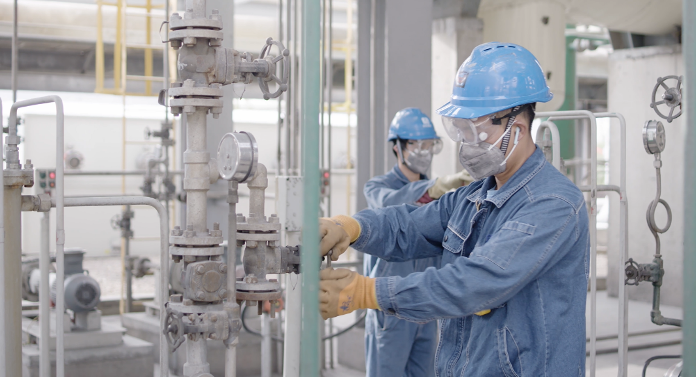
As a project of key pollutant discharge units, the Group has set up standardized automatic monitoring stations and monitoring sampling ports in accordance with technical specifications, purchased and installed automatic monitoring facilities for pollutants and connected with the monitoring platform of the ecological environment department. In order to ensure the normal operation of the automatic monitoring equipment and the authenticity and accuracy of the data, the project entrusts a third-party operation and maintenance company to carry out operation and maintenance in accordance with the technical specifications. At the same time, the pollutant discharge information is disclosed to the public through the electronic display screen installed at the entrance of the factory.
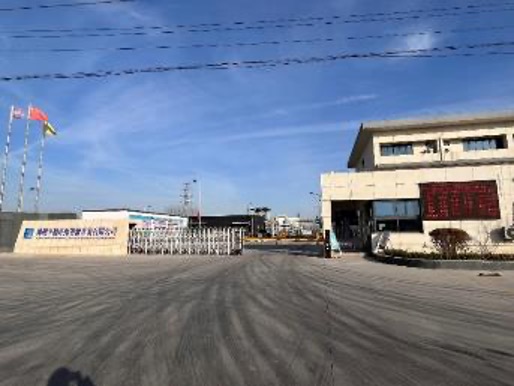
As part of the greening and conservation work in spring, the Quannan Project of the Group carried out pruning and replanting in a reasonable manner, and implemented greening and conservation on bare land and missing seedling areas. To prevent and comprehensively control plant diseases and insect pests, eco-friendly pesticides were used, and nitrogen, phosphate and potassium fertilizers were applied in a rational manner to provide nutrients required by plants, minimizing the negative impact on the environment, striving to promote diversity and stability of vegetation, and creating a more eco-friendly urban landscape.
